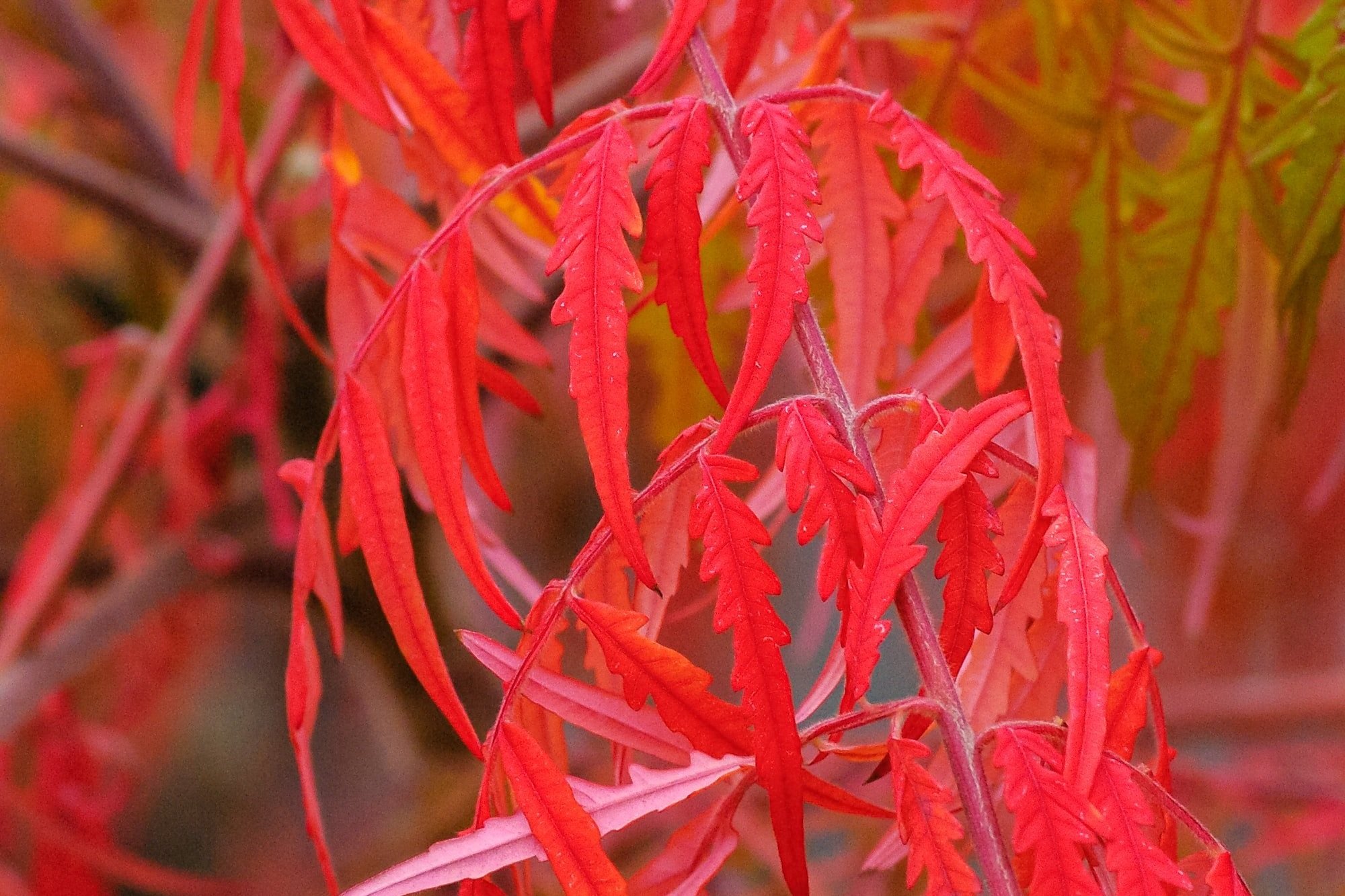Autumn colours for your garden
When it comes to the changing of seasons, most of us are influenced by nature’s calendar - or phenology - rather than the arrival of a new month. Falling leaves, migrating birds, fruits for foraging and fungi tell us that it’s time to put the BBQ away, stock the cupboard with hot chocolate and settle in for reruns of Hocus Pocus.
Although it is true that with the departure of summer comes the inevitability of a changing garden, colour and vibrancy don’t need to be forfeit. We have put together the best plants and trees for putting on a late colour spectacle in your garden.
*Plants are subject to availability at Wellington Home and Gardens*
Rhus
Common names: Staghorn Sumac, Velvet Sumac and Vinegar Tree
The fiery red autumn display these deciduous trees put on in autumn is a great reason why you should consider adding them to your garden. This is further enhanced by the cones of deep red fruit produced by female plants.
They look great as the main focal point in a mixed border. Grow them in moist, well-drained soil in full sun.
Japanese Maple
Common name for all trees from Japan that fall within the Acer cultivars of Palmatum and Japinicum.
We love the Acer “Inaba-Shidare”; an award-winning garden tree that shows off feathery purple foliage that dramatically turns vivid red in autumn.
They’re the perfect choice for any size garden as they are slow in growth; approximately growing 3 x 3 metres in 20 years in an upright assemblage. They can even be pot grown but, like all Japanese Maples, they do prefer sheltered spots.
Liquidambar Styraciflua - a Wellington favourite!
Common name: Sweet Gum
Introduced to the UK in the 17th century, these trees have been praised time and time again for being one of the best trees for autumnal colour. As temperatures cool, the green shade of the lobed leaves are set alight, with shades of red, orange and even fluorescent purple; transforming this deciduous species into the definition of autumn.
It is super easy to grow as long as they are given the proper space; they can grow to 8 metres high and 5 metres wide.
Calla Lily
Zantedeschia “Night Cap”
The Calla Lily “Night Cap” is the definition of dramatic. Their deep purple shade dances into black while the bright green, spotted leaves that surround bring a powerful contrast. They look to mimic a chalice of deep red wine.
These floriferous plants show off their elegant blooms through summer and into early autumn and can even be enjoyed as house plants (please note that they are toxic to humans and pets if ingested). Keep them happy with bright, indirect sunlight and moist, well-drained soil and they will regrow each year. Prune once the flowers have wilted.
Conifers
Species: Thuja, Cryptomeria, Juniperus, Chamaecyparis
Conifers are easy to grow and unfussy. One of the best features of conifers is the nutty, autumn scent they release once it’s rained. They are a perfect way of adding colour, texture and delicious scent to your garden all-year round.
They can be found in a variety of colours, including gold, for that perfect autumnal feel.
Nandina
Also known as: Heavenly Bamboo, Sacred Bamboo
This evergreen / semi-evergreen shrub looks great in every season. The delicate foliage turns fiery red and bronze during autumn with bright berries remaining throughout the winter.
Despite it’s common name and similar appearance, Nandina is not a bamboo. It is, however, a great alternative to bamboo as it is not as invasive. They are low maintenance, only needing some shelter from cold winds in the winter.
Amelanchier Spicata
Also known as: Dwarf Serviceberry, Low June-Berry
Amelanchier are small deciduous shrubs or trees. They show off star-shaped white flowers in early spring that bring edible red to purple berries from June to August. It is a classic all-rounder as it also puts on a real show during autumn when their dark green leaves turn to orange, red and purple.
They are also suitable for small gardens and patios.
Pansies
The holy grail of winter flowers.
These low maintenance little flowers, popular for pot or border displays, are a longstanding gardeners favourite. They flower all year round and can be found in an array of different colours. Plant them up until mid/late autumn and they will happily bloom through winter.
If planting in early autumn, the general rule is to plant bush varieties 15cm apart and trailing varieties 20-25cm apart. If planting in late autumn, bush varieties should be planted 10cm apart and trailing varieties at 15cm apart as they won’t grow as much before the temperature begins to fall. Deadheading the flowers will encourage the plant to produce fresh blooms.








